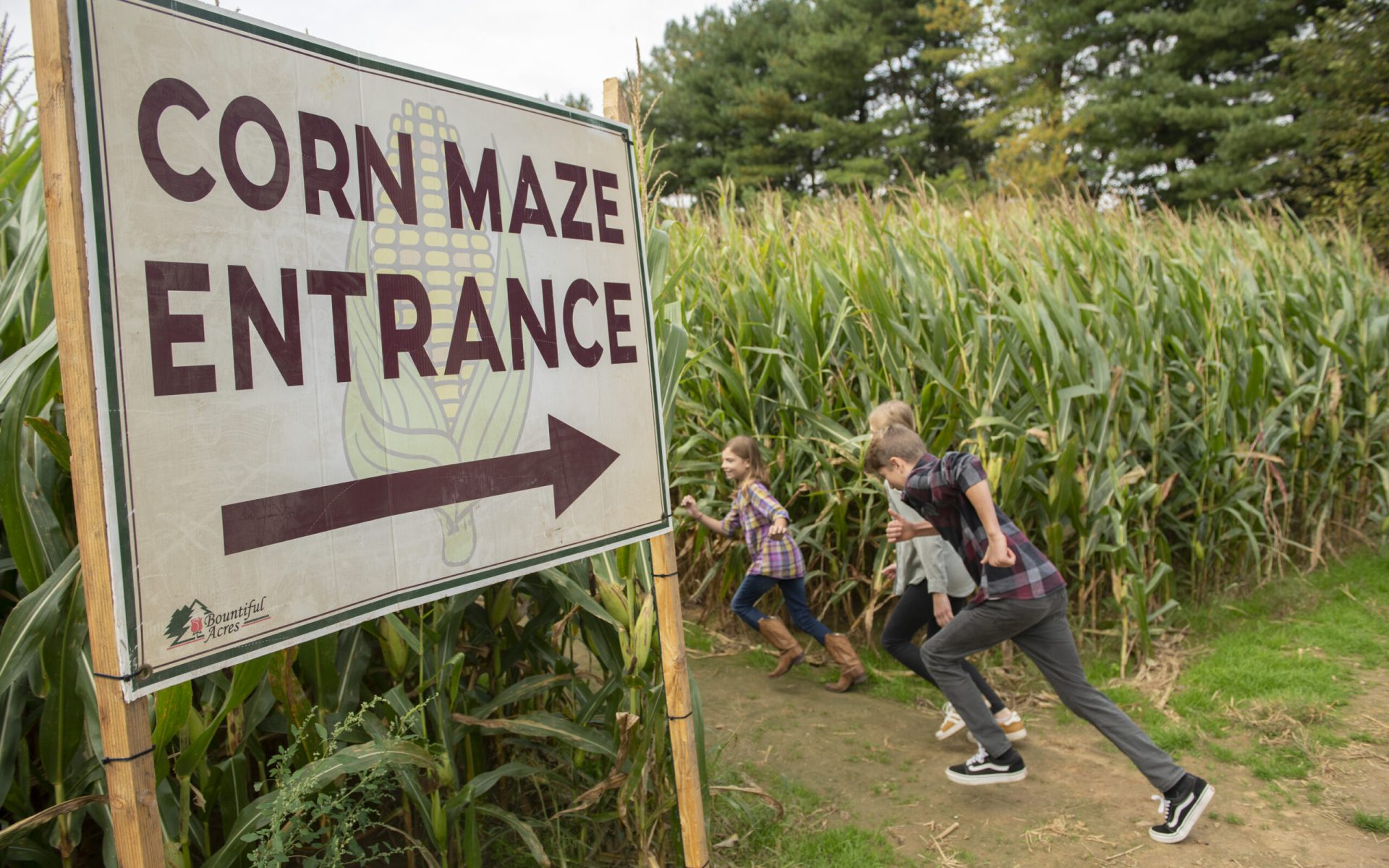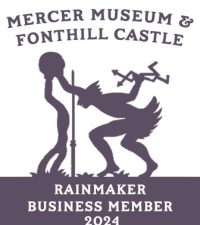Autumn’s arrival ushers in a kaleidoscope of colors, pumpkin spice lattes, and the delightful tradition of visiting corn mazes. These intricate puzzles carved into fields of maize have become a staple of fall festivities. While navigating these winding paths is a popular seasonal pastime, the story of corn mazes is as captivating as the mazes themselves.
The Roots of Corn Mazes
Corn mazes, also known as maize mazes, have deep roots in agrarian history. Their origins can be traced back to ancient cultures, such as the ancient Greeks and Romans, who often created labyrinthine structures for both entertainment and religious purposes. However, the modern-day corn maze as we know it began not far from Bucks County.
The first corn maze appeared in 1993 in Annville, Pennsylvania, created by a farmer named Don Frantz. Inspired by a simple puzzle in a book, Frantz used a lawnmower to carve a basic design into his cornfield. This rudimentary experiment sparked a phenomenon that spread like wildfire across the United States and beyond.
Tending to the Corn
The care that goes into the corn used for these mazes is essential to their success. Corn, often referred to as maize in North America, is the primary canvas upon which these intricate designs are etched. Farmers cultivate specific varieties, typically “field corn” rather than sweet corn, because of its sturdier stalks and durability.
Planting, growing, and maintaining corn for mazes involves precision. Farmers must carefully monitor crop density to ensure the corn stalks don’t grow too densely, which could impede visitors’ progress and obscure the maze design. They also need to time planting so that the corn reaches the right height for maze construction by the start of the fall season.
Irrigation systems are strategically employed to maintain the health of the corn throughout the growing season, ensuring the stalks are robust and able to withstand the rigors of maze construction and thousands of visitors.
Maze-Making Technology and Design
Creating these intricate mazes is no longer a job solely for the lawnmower-wielding farmer. Instead, technology and meticulous design play pivotal roles in shaping these large-scale puzzles.
1. GPS Technology: Farmers and maze designers often employ GPS technology to chart the precise coordinates for each section of the maze. This allows for intricate, complex designs to be executed with incredible accuracy.
2. Computer-Aided Design (CAD): CAD software is another essential tool, enabling designers to craft intricate patterns on a computer before transferring them to the field. This process not only enhances the visual appeal of the maze but also optimizes the visitor experience, making it challenging but enjoyable.
3. Drones: Drones are increasingly used to survey the cornfields and provide a bird’s eye view of the developing maze. This technology allows designers to ensure that the maze aligns with their vision and correct any issues that may arise during the growing season.
Corn mazes are a testament to the enduring appeal of agricultural traditions and creative innovation. From their humble beginnings in Pennsylvania, these intricate and visually stunning mazes have grown to become an integral part of the autumn landscape, offering families and friends a unique opportunity to get lost in the charm of the season.
Behind the scenes, technology and design have transformed corn maze creation into a blend of art and agriculture, creating puzzles that entertain and educate. So, when you find yourself wandering through the twists and turns of a corn maze this fall, take a moment to appreciate the history, care, and technology that have woven this agricultural pastime into the rich tapestry of our autumn traditions.
We challenge you to conquer our maze at our Pumpkin Harvest Festival!





